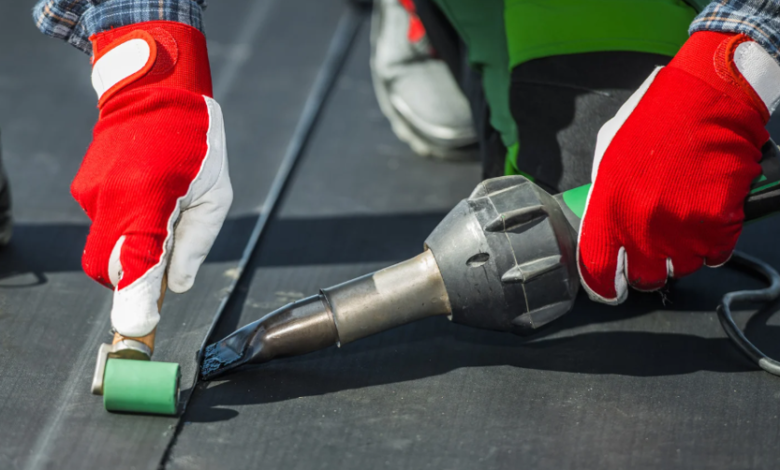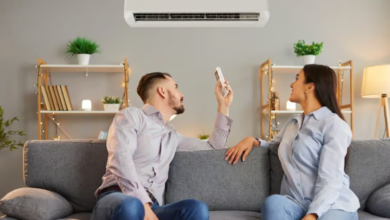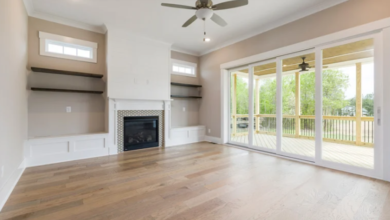The Benefits of Rubber Roofing for Commercial and Residential Use

Roofing systems must strike a balance between durability, affordability, and performance to meet the needs of both homeowners and businesses. Among modern options, rubber roofing has become increasingly popular for its cost-effectiveness and adaptability. For those considering rubber roofing in Atlanta, this material offers a wide range of benefits, making it suitable for both residential and commercial properties.
What Is Rubber Roofing?
Rubber roofing, often referred to as EPDM (ethylene propylene diene monomer), is a synthetic material designed to provide long-lasting waterproofing. It is widely used for flat and low-slope roofs but is also an option for pitched applications. Available in large rolls, it can be installed with adhesives, mechanical fasteners, or ballasting, creating a seamless and durable surface. This flexibility makes rubber roofing an excellent choice for projects ranging from small homes to expansive commercial buildings.
Superior Leak Resistance
One of the greatest advantages of rubber roofing is its ability to resist leaks. Unlike traditional materials that rely on overlapping shingles or seams, EPDM creates a continuous barrier that reduces weak points where water can penetrate.
When it comes to rubber roof coatings and leaks, applying protective coatings further enhances waterproofing and extends the roof’s service life. These coatings add an extra layer of protection against UV rays, moisture, and temperature fluctuations, ensuring the roof maintains its durability and reducing the likelihood of costly repairs over time. This combination of durability and prevention makes rubber roofing ideal for areas with heavy rainfall.
See also: How Easy Installation Kits Are Changing Home Heating and Cooling
Resistance to Water Ponding
Flat and low-slope roofs are prone to water ponding, which can degrade materials over time. Rubber roofing is engineered to withstand prolonged exposure to moisture without warping, cracking, or deteriorating.
Learning how rubber roof repairs prevent ponding issues emphasizes that EPDM’s durability makes it one of the best materials for preventing long-term damage in such conditions. Its resistance to standing water ensures the roof remains intact, minimizes structural stress, and provides reliable performance even in areas prone to heavy rainfall.
Energy Efficiency Benefits
Rubber roofing also contributes to energy savings. Its reflective coatings reduce heat absorption in the summer, keeping buildings cooler and lowering air conditioning costs. In winter, EPDM helps insulate and retain warmth, providing consistent comfort. These qualities make it an eco-friendly and cost-effective option for both homes and businesses. Additionally, rubber roofing can often be recycled at the end of its lifespan, making it an environmentally responsible choice.
Cost-Effectiveness and Longevity
While the upfront cost of rubber roofing is generally higher than that of asphalt shingles, its long-term savings outweigh the initial expense. EPDM roofs can last 30–50 years with minimal maintenance, significantly reducing the need for replacements.
For commercial properties where roof size and repair costs can be substantial, this longevity provides a major financial advantage. Residential homeowners also benefit from lower upkeep costs and greater value over time.
Low Maintenance Requirements
Rubber roofing requires little ongoing maintenance compared to other roofing systems. Periodic inspections and minor repairs, such as resealing seams or applying protective coatings, are typically sufficient to keep the roof in optimal condition. This low-maintenance profile makes it a convenient solution for property owners who want reliable protection without constant upkeep.
Versatility for Different Applications
Rubber roofing is suitable for a wide range of properties. In commercial settings, it performs well in warehouses, office buildings, and retail spaces. In residential projects, it is particularly effective for garages, additions, or homes with flat or low-slope designs. Its adaptability ensures that property owners can enjoy consistent performance regardless of building type.
Conclusion
Rubber roofing offers a powerful combination of durability, leak resistance, and energy efficiency, making it a strong investment for both homes and businesses. By choosing rubber roofing, property owners gain a roofing system that prevents water ponding, reduces maintenance, and delivers long-term cost savings. Whether for residential or commercial use, rubber roofing stands out as a reliable and versatile solution.


